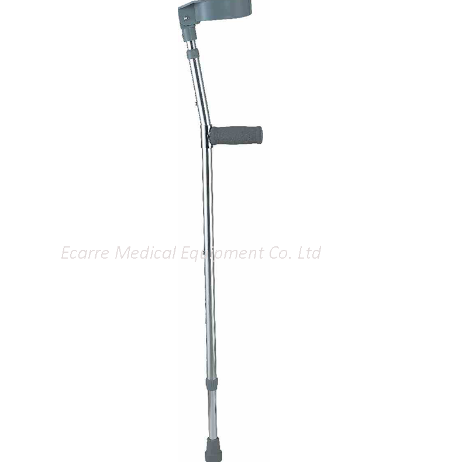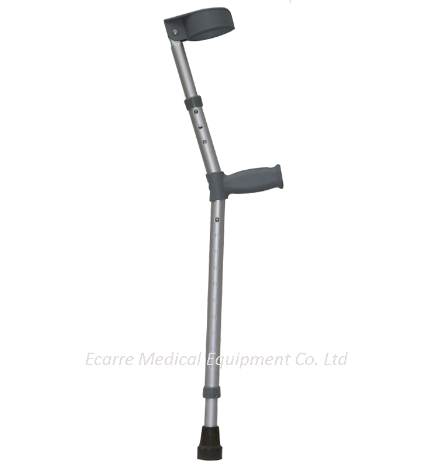What Are Arm Crutches Used for?
Have you found that there is a variety of crutches shown in the market? For some people, the crutch walking stick is an essential piece of equipment for their daily life, regardless of which type of movement difficulties they confront. Then, in this post, the author will give a discussion about the crutch to let you get a basic understanding of it.
What Are Arm Crutches Used for?
The arm crutch, also known as a crutch walking stick, is a walking aid to assist those with walking or maintaining balance when they have difficulty bearing weight on one or both legs, such as cerebral palsy and other neuromuscular conditions. Then, the arm crutch mainly consists of a handle, forearm cuff, and a shaft with a rubber tip at the bottom for stability.
Who Can Use Crutches?
As above mentioned, arm crutches are suitable for those who have movement difficulties. Someone may have no idea whether the arm crutch is good for their movement. Then, in this post, the author would list what kind of situation can use the arm crutch.
●Leg injuries
Arm crutches are commonly used by people who have sustained leg injuries, such as fractures, sprains, or strains, to reduce weight bearing on the affected leg during the healing process.
●Post-surgery recovery
If you have accepted the surgery, and need some walking to prevent excessive strain on the operated limb, the arm crutch is a good option. It would help you prevent excessive strain on the operated limb and aid in the rehabilitation process.
●Muscular or neurological conditions
People with conditions that affect their mobility, such as cerebral palsy, multiple sclerosis, or muscular dystrophy, may use arm crutches to improve stability and assist with walking.
●Gait abnormalities
Individuals with gait abnormalities or imbalances may use arm crutches to help maintain a more stable and balanced walking pattern. They also can use s to make the correct walking pattern.
●Non-weight-bearing instructions
In some cases, healthcare professionals may advise patients not to put weight on one or both legs due to certain medical conditions or surgeries. Arm crutches can be used to adhere to these non-weight-bearing instructions.
●Temporary mobility challenges
Individuals recovering from temporary injuries or illnesses that affect their mobility, such as a severe sprain or temporary paralysis, may use arm crutches until they regain their strength and balance.
What is An Advantage of Arm Crutches?
Most people may misunderstand that there is only one benefit of using an arm crutch. As a matter of fact, the arm crutch offers users many benefits. Here are the major benefits.
●Enhanced Mobility
Enhancing the user’s mobility is a direct benefit. It provides the users with good supporting power to let them move around more easily and maintain their independence and freedom of movement.
Also, arm crutches are often used during post-surgery recovery or rehabilitation periods, allowing individuals to regain mobility while their legs heal.
Also, arm crutches are often used during post-surgery recovery or rehabilitation periods, allowing individuals to regain mobility while their legs heal.
●Weight Distribution
The crutch walking stick usually provides support under the arms, which helps distribute body weight away from the legs, reducing pressure on the lower limbs and joints. his can be particularly beneficial for individuals with leg injuries or conditions like arthritis because it would ease the pain to a certain degree.
●Stability and Balance
Arm crutches offer a stable and balanced platform, reducing the risk of falling or stumbling, especially for those with mobility challenges. Also, it would prevent the user who has leg injuries get a secondary injury.
Are Forearm Crutches Better than Regular Crutches?
Generally speaking, long-term crutch users think the foream crutch is a better and more practical option. It is because the forearm crutch offers support when they feel tired. The underarm crutch is a preferred option for the short-term user. However, the selection of the crutches is determined by multiple factors such as the physician's personal preference, patient's age, weight, agility overall strength, etc.
Are Forearm Crutches Better than A Cane?
As a matter of fact, the selection between a forearm crutch and a can is determined by the patient’s specific condition, mobility needs, and overall strength, because both of them serve different applications and offer different levels of support.
Conclusion
Whether it is orthopedic crutches or forearm crutches, they play a crucial role in each application. However, when you plan to choose a crutch for your use, you need to consult with a healthcare professional or physical therapist to determine the most appropriate mobility aid for specific needs.









